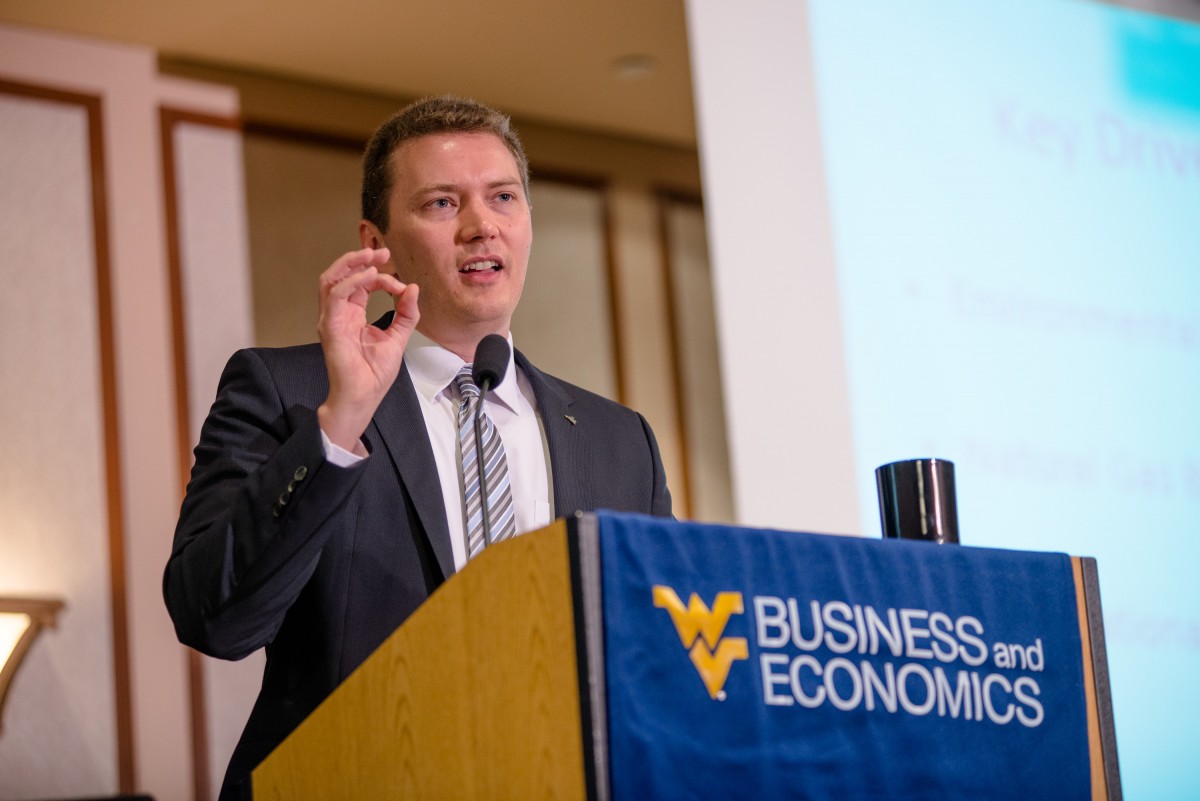MORGANTOWN — The path of West Virginia’s economic recovery is unpredictable, experts said Thursday, but things are already bouncing back and some optimism is in order.
“I personally remain optimistic that we’re going to have a relatively rapid recovery,” said John Deskins, director of WVU’s Bureau of Business and Economic Research.
“We’ve never seen anything like this before,” he said during a webinar he hosted called West Virginia’s Economy During COID. “This is a recession that hasn’t been caused by economic problems. …bThis recession came completely out of the blue.”
It was a “recession by design,” he said. The nation intentionally closed businesses and sent people home in response to a worldwide public health crisis, he said. The Great Depression that began in 1929 took three years to fully set in; this happened in a month. That makes predicting a rebound difficult.
A rebound is underway, but it shape will depend on how the pandemic plays out, said Deskins and Andy Bauer, vice president and regional executive for the Baltimore branch of the Federal Reserve Bank of Richmond.
Both economists presented an array of numbers; a few will illustrate. In February, Deskins said, West Virginia’s job numbers stood at 711,000. The pandemic put 94,000 out of work by mid-April, but 13,000 of those had returned to work by mid-May.
The state unemployment rate skyrocketed from 4.9% in February to 15.9% in April. It improved to 13.3% in May – better than the national rate of 14%, and neighboring Pennsylvania, Kentucky and Ohio, which stand at 18%, 17% and 16% respectively.
And unemplyment insurance claims are tapering off, he said, from a peakof 146,566 on April 18 to 76,609 on June 13.
Bauer said the pandemic saw a decade’s worth of job gains wiped out in a month across the nation. The national economy bottomed out in April but is now climbing back up. Manufacturing has increased 3.8% since bottoming out and retail sales have climbed 17.1%, though both are still below pre-pandemic levels.
National health policies and the extent of the COID-19 virus will dictate the path of growth, he said. Will people remain fearful, hesitate to visit public places and make purchases?
Deskins described the rebound scenarios in four shapes on a graph: an L, a W, a check mark and a V. The L is the worst: The rebound gets little better than it is now. A W is also bad: Reopenings across the nation cause new outbreaks and spikes and the economy bounces up and down as things close and open and close again.
The check mark is somewhat better: The economy rebounds steadily but slowly and takes a long time to reach the pre-pandemic level.
The V is the best: The current trajectory continues. It still remains unknown how soon full recovery would occur, but it would come. The longer the recession goes the more underlying damage it will create, he said.
Back to optimism, Deskins said, “Despite the suffering we have had, I think this opens up new opportunities for West Virginia.”
State leaders have focused up to now on bringing new businesses here, he said. But the pandemic has taught us the potential for telework. That means the state could refocus on recruiting individuals here who want to escape their urban environments and live where natural beauty and recreation about.
This kind of approach could pose less risk, too, he said. A single big employer that fails would have a big impact. A thousand teleworkers spread across many employers is less risky if some don’t succeed.
But there’s one big obstacle to widespread teleworking. “Lack of broadband access is a challenge,” said Mike Graney, executive director of the state Development Office, part of the Commerce Department.
They may not be able to attract people to remote areas, he said, but could draw them to towns and cities with good broadband. Meanwhile, Commerce is working to pursue federal funds as they become available to deploy rural broadband as quickly as possible.
Some areas will remain too remote, he said, to make deploying broadband fiber economically viable, soWISP – wireless internet service providers – deployed via towers may be the best option for those areas.
Commerce Secretary Ed Gaunch said his office is developing programs to attract teleworkers. West Virginia’s successful response to the pandemic has people seeing the state through a different prism than previously, evident in such things as record reservations for state park cabins.
Tweet David Beard @dbeardtdp Email dbeard@dominionpost.com




